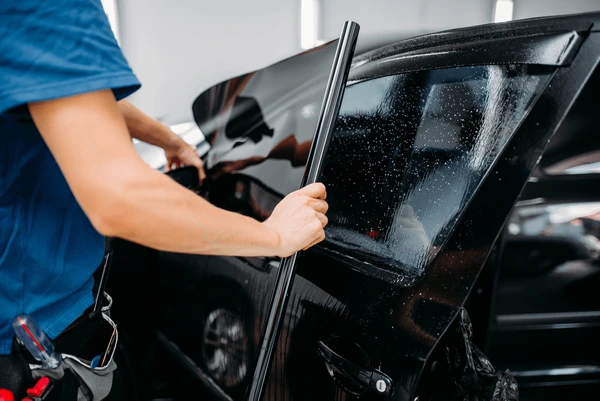
Electric vehicles are becoming the first preference for environmentally friendly persons. However, for enhancing your driving experience and prioritizing sustainability, you require special needs. One such upgrade is window tinting.
With loads of tint shade options out there, picking the right one for your ride can get confusing. This car tint guide is here to make it easy. We’ll go through the important things to think about, so you can choose the perfect tint that suits your electric car needs.
Table of Contents
Ultimate Guide For Finding Window Tints for Electric Vehicles
When it comes to tinting your Tesla or other electric vehicle, finding the perfect window tint is a key consideration. However, choosing the ideal window tint for a car can be unexpectedly complex.
How do you navigate the various percentages, and what considerations should you bear in mind? Here’s what you need to know to discover the most suitable tint.
UV protection
Protecting the interior of your electric vehicle from harmful UV rays is crucial for enhancing the life of the car’s upholstery and ensuring a comfortable driving experience.
Quality window tints are equipped with UV-blocking capabilities, shielding you and your passengers from the sun’s harmful rays. UV protection also contributes to preventing fading and deterioration of the interior materials.
Heat Rejection
In regions with hot and sunny climates, opting for a darker tint can provide substantial heat rejection, resulting in a cooler car interior and less strain on the air conditioning. When making your decision, take into account your usual driving environment and patterns of sun exposure.
Look for tint films that are specifically designed to block infrared (IR) rays, as these are responsible for transmitting heat.
Window Tint Percentages
Moving on, let’s delve into the typical spectrum of window tint percentages commonly available. While you might wish for a very precise Visible Light Transmission (VLT) for your vehicle, it’s important to note that most prominent window tint manufacturers adhere to a standard range: 50%, 35%, 20%, and 5%. ‘
Obtaining tint within this standard range should be readily accessible, although conducting thorough research might reveal additional options.
Safety Regulations
Certain states enforce stringent window tint laws.In such cases, only a specific range of tint levels for car windows, typically 50% VLT or higher, may be allowed.
On the flip side, other states have more lenient regulations regarding the darkness of car tint. It’s crucial to invest time in researching the window tint laws applicable in your state. This ensures a judicious decision that aligns with the legal window tint levels mandated in your region.
Film Type
Electric window tinting films come in various types, such as metallic, ceramic, and dyed films. Metallic films incorporate metal particles, reflecting heat and blocking UV rays. Ceramic films, on the other hand, consist of ceramic particles, offering superior heat and UV protection.
Dyed films are constructed with a single layer of color and provide less heat or UV protection compared to metallic or ceramic films. Choose according to your requirement.
- Understanding the Leading Causes of Car Accidents in 2025 - November 18, 2025
- How to Spot a Great Deal on a Car for Sale in NSW - October 31, 2025
- How to Choose the Right Used Car Dealership in NSW - October 31, 2025
